Duncan Grant and Henri Matisse
In August, the curatorial team began cataloguing the larger works on paper and canvas of the Angelica Garnett Gift. The discovery of a dynamic pencil drawing depicting four frantically moving figures encircling a fifth immediately bring Matisse’s famous work Dance to mind.
The rough sketch is undated and unsigned, and like so many of the quick ephemeral drawings by Grant in the Gift, it is in perfect condition. Was this sketch a design for a larger, more detailed work on canvas, perhaps? Had Grant directly been inspired by Matisse’s Dance?
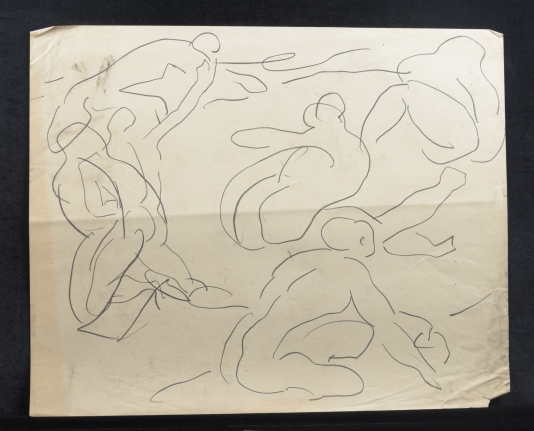
CHA/P/3004 Recto. Artist Unknown (Likely to be by Duncan Grant), study of moving figures in a circle, pencil on paper. Photograph © The Charleston Trust.
We have found several items in the archives that indicate an interest on the part of Bloomsbury in Matisse and his career. There are two records of Matisse exhibitions; one, a card for ‘The Exhibition of Contemporary French Painting’ (undated), and the other, a poster advertising a show at the Musee Matisse in 1955. We also found a commercial print of the work ‘Nu Bleu’, bought by Duncan Grant in 1968 after visiting the ‘Matisse 1869-1954’ Retrospective Exhibition at the Hayward Gallery by the Arts Council.
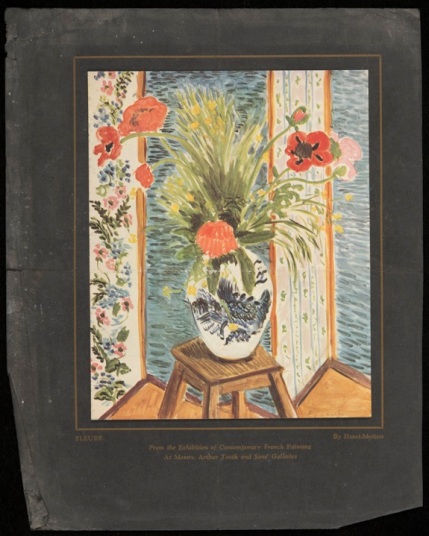
CHA/E/222 Recto. Exhibition advertisement card, for Henri Matisse exhibition, date and place of exhibition unknown. Card © The Estate of Duncan Grant. . Photograph © The Charleston Trust.
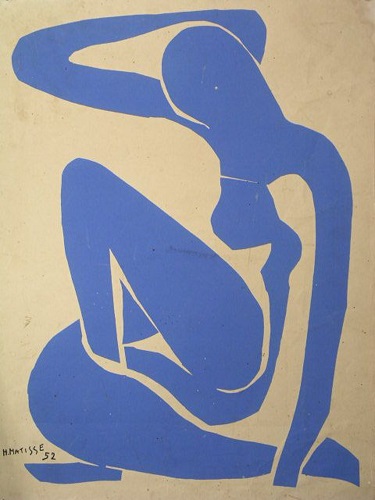
CHA/P/83 Recto. Print, of Henri Matisse’s work ‘Nu Bleu’, purchased by Duncan Grant in 1968. Print © The Estate of Duncan Grant. . Photograph © The Charleston Trust.
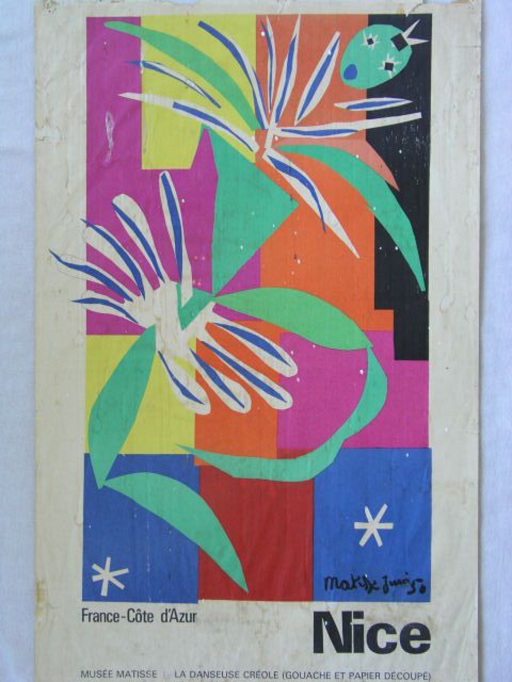
CHA/P/317 Recto. Poster, for Henri Matisse exhibition in Nice, France, in 1955. Poster © The Estate of Duncan Grant. Photograph © The Charleston Trust.
Nasturtiums, or Nasturtiums with the Painting ‘Dance’ I, as it was later named, features a memorable motif from the most well-known early modernist work by Matisse, ‘Dance’. In both works, the nude figures depicted form a circle, linked by their hands’ their bodies bowed in the joyful movement of dance. The scene is a celebratory one: the figures have shed their clothes with gay abandon, and are embracing all that is natural within and around themselves.
‘Here was a possible path,’ wrote Vanessa Bell of the first Post-Impressionist exhibition in 1910 in which Matisse’s work featured. ‘A sudden liberation and encouragement to feel for oneself, which were absolutely overwhelming.’[1] The desire to paint, then, matches the desire of Matisse’s nude figures to dance.
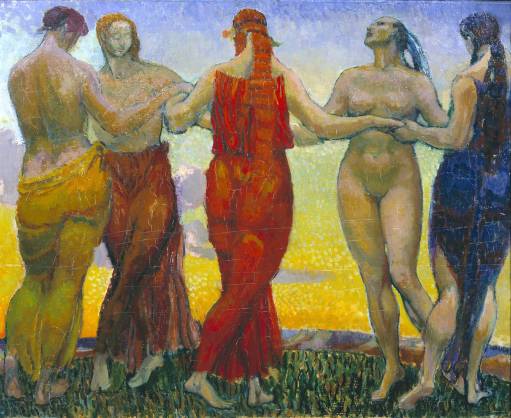
Duncan Grant, ‘Dancers’, 1910, oil paint on canvas. Photograph © Tate.
Looking at Duncan Grant’s 1910 work Dancers , one can see straight away how Grant had been inspired by the bright colours, and the bold and dynamic figures caught in flowing movement that Matisse depicted in his Dance series. ‘It is as if Duncan had suddenly learnt to diminish the emphasis on materiality, on textures, light and shade, in order to allow for a more vibrant use of line, interval, structure and movement,’ writes Frances Spalding of Grant’s work. ‘Matisse helped liberate him from the tyranny of appearances.’
[1]Frances Spalding, Vanessa Bell, p.101
PS. It may be of interest to regular readers that we will shortly be bidding a sad farewell to the Charleston Attic. What a rewarding 6 months working as Curatorial Interns it has been- from the fascinating discoveries we have made to the in-depth research carried out, not forgetting our involvement with the Festival.
We would like to welcome our new Intern, Dr. Anne Stutchbury, to the Attic, and wish her the best of luck with her work.
A big thank you to our followers- your readership has been greatly appreciated! Keep following The Charleston Attic Blog for new and exciting archival discoveries and research insights…
Philippa Bougeard and Emily Hill
